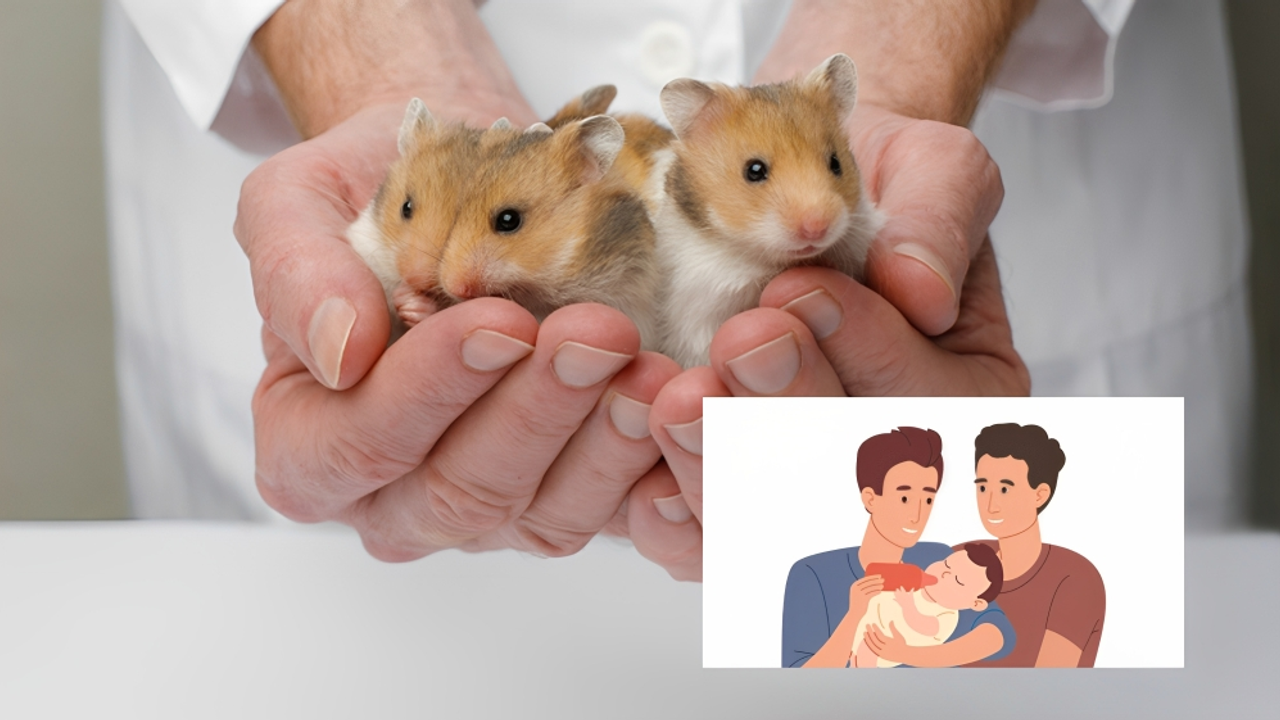Scientists in China have created mice using sperm from two males, marking a major scientific step. Though the success rate is low, this method may one day help same-sex male couples have biological children.
Scientists have created mice with two fathers! Yes, you read that right. In a major scientific breakthrough, researchers in China have successfully created mice with two biological fathers. These mice later had healthy babies of their own. This is the first time in the world that such a result has been achieved using only sperm cells.

How the experiment worked
The research was done by Dr Yanchang Wei and his team at Shanghai Jiao Tong University in China.
They began by taking an egg cell from a female mouse and removing its nucleus (which carries the mother's DNA). Into this egg, they combined two sperm cells from two male mice.
But this alone wasn't enough. They had to change how some genes in the sperm worked. To do this, the team used a special method called epigenome editing.
What is epigenome editing?
Our genes come with on and off labels known as epigenetic marks. These marks decide which genes are active. Mothers and fathers have different sets of these marks.
If both sets of chromosomes come from two males, many genes might be turned on or off in the wrong way. This causes the embryo to stop growing.
To fix this, the researchers edited seven specific sites in the sperm DNA using a method based on CRISPR technology. This helped the embryo develop normally.
The results: Very low success, but real births
The team created 259 embryos using this method and placed them in female mice.
Only two male baby mice survived, but both grew up healthy and went on to father babies of their own after mating with females.
While the success rate was low, this is still a major achievement in reproductive science.
Why creating two-mother mice was easier
Back in 2004, scientists had already managed to create a healthy mouse named Kaguya from two mothers.
In 2022, the same Chinese team also made two-mother mice using only epigenome editing, without changing the actual DNA.
But doing the same with two fathers is harder. That’s because more changes are needed to correct how genes behave when both sets come from males.
Why gene activity must be corrected
Normally, we inherit one set of chromosomes from each parent. But some genes behave differently depending on whether they come from the mother or father. This is called genomic imprinting.
If both sets come from one parent, say, two fathers, these imprints can cause problems. For example, a gene that should be off may be on in both chromosomes, leading to health issues.
Why this matters but won't be used on humans soon
This experiment shows that it is technically possible for two males to have a biological child through science.
But experts warn that this method cannot be used in humans yet. The process involves hundreds of eggs, many surrogates, and has a very low success rate.
Scientists also don't fully understand the side effects. So while the idea is exciting, it is still many years away from being safe for people.
Could it work better in the future?
Researchers believe the success rate could go up if more than seven gene sites are edited. They also think the right sites may be different in humans, so more study is needed.
One challenge was that some embryos had two Y chromosomes, which cannot grow into a baby. Also, not all gene edits worked perfectly, and some may have caused errors elsewhere in the DNA.
Will babies have three parents?
If scientists ever manage to create human babies from two men using this method, the baby will technically have three genetic sources. That’s because the egg cell used still contains mitochondria, which carry a small amount of DNA from the egg donor.
Other methods are also being tested
In 2023, another team in Japan tried a different method. They turned male stem cells into egg cells and used those to create mice with two fathers. But it’s unclear if any of those mice survived to adulthood.
Also, no team has yet managed to turn human stem cells into eggs successfully.
This experiment is an early sign of what might be possible in the future. For now, it's a powerful tool to study genetics, fertility and imprinting.
It also opens the door to new ideas about same-sex reproduction. But it’s clear that much more work and testing is needed before anything like this can be tried with humans.


